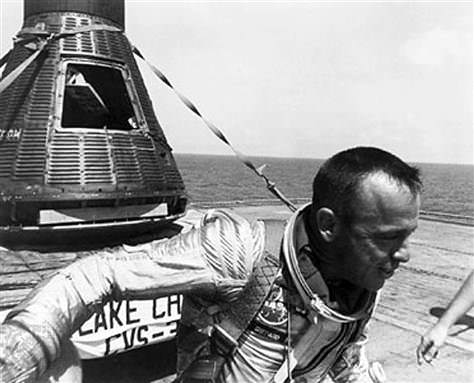51 years ago today, on May 5, 1961, NASA launched the Mercury-Redstone 3 rocket carrying Alan B. Shepard, Jr. aboard the Freedom 7 capsule. Shepard successfully became America’s first man in space, making a brief but historic suborbital test flight that propelled American astronauts into the space race of the 1960s.
The video above is made from photographs taken by a film camera mounted to the Freedom 7 spacecraft and scanned by archivists at Johnson Space Center. It shows the view from Freedom 7 as the Redstone rocket launched it into space, getting an amazing view of Earth’s limb and the blackness beyond before falling back to splash down in the Atlantic.
The video is made from the entire film reel, so at the end there’s also some shots of a light experiment inside the spacecraft. (View the individual scans at ASU’s March to the Moon website here.)
What’s amazing to realize is that, at this point in time, the space surrounding our planet was a very empty place. This was a time before communication and weather satellites, before GPS, before Space Station and space shuttles — and space junk — and student-made weather balloon videos. Just 51 years ago low-Earth orbit was a new frontier, and guys like Shepard (and Gagarin and Glenn, etc.) were blazing the path for everyone that followed.
Even though images of Earth from space are still amazing to look at today, seeing these photos reminds us of a time when it was all just so very new.
Images and video: NASA/JSC/Arizona State University

Mission Accomplished: Alan Shepard on board the deck of the USS Champlain after recovery of Freedom 7 (NASA)
Source: Universe Today
No hay comentarios:
Publicar un comentario